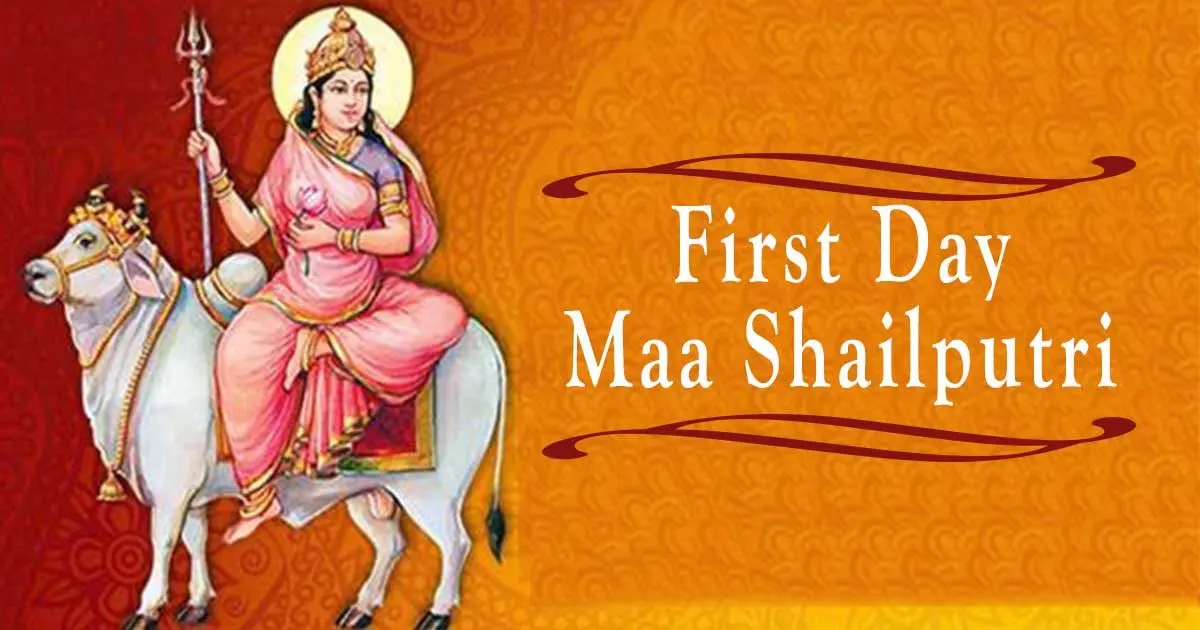Vasant or Chaitra Navratri Day 1: Perform Ghata Sthapana and Revere Maa Shailputri
By: Future Point | 21-Mar-2020
Views : 3159
Navratri is a festival in which the nine forms of Goddess Durga known as the 'Nav Durga' are worshipped for nine day with each day dedicated to one form of the Goddess. The word Navratri means 'Nine Nights' and this comes from the fact that this festival is especially celebrated during the nights!
Navratri is celebrated twice in an year- once during the month of Chaitra and the other in the month of Ashwin. Vasant Navratri or Chaitra Navratri begins from the Pratipada Tithi (first date) of the Shukla Paksha (Waxing Phase of the Moon) in the month of Chaitra as per the Hindu calendar.
Who is Maa Shailputri?
Goddess or Maa Shailputri is a form of 'Adi Shakti' (Primordial Energy) Goddess Sati. Maa Shailputri incarnated after Goddess Sati self immolated Her due to the insult of Her husband- Lord Shiva by Her father King Daksha. In the absence of Goddess Sati, the balance of the cosmos was disturbed and a grieving Lord Shiva too went into deep isolation, urging the Gods to pray Adi Shakti to incarnate again.
Then, Adi Shakti took birth as the daughter of King Himalaya and came to be known by many names such as Parvati, Hemvati and Shailputri. In the current context, 'Shail' means Himalaya mountain and 'Putri' refers to daughter. Hence Shailputri means the Daughter of Himalaya.
Depiction of Maa Shailputri
Maa Shailputri is depicted as seated on a bull and for that She is also known as 'Vrisharudha'. Among the nine forms of Goddess Durga, Maa Shailputri is depicted with two hands. She holds a 'Trishul' in Her right hand a 'Kamal' or a Lotus flower in Her left hand.
Significance of Maa Shailputri
With the worship of Maa Shailputri, the 'Mooladhara Chakra' is awakened which results in the beginning of the spiritual ascension of a devotee. The Mooladhara Chakra is the very basis of 'Yog Sadhna' and when awakened it helps a devotee to accomplish all significant tasks in life with absolute success!
Maa Shailputri blesses Her devotees with an ability to attain efficiency and perfection in their endeavours. Being born as the daughter of the mighty Himalayas, Maa Shailputri bestows strength, abundance and prosperity upon Her devotees.
Maa Shailputri is the absolute form of Mother Nature and nurtures Her devotees just like a mother would. The colour associated with the Day 1 of Navratri is Yellow and it symbolizes brightness, happiness, and cheer. By worshipping Maa Shailputri, one who has an ill placed Moon in his/her Horoscope, gets rid of its negative effects.
How to please Maa Shailputri?
In order to please Maa Shailputri, devotees perform Nav Durga Pujan. Nav Durga Pujan is a powerful spiritual process that wards off all problems & hurdles from life and brings the incredibly auspicious blessings of the nine forms of Goddess Durga (including Maa Shailputri) in the life of a person which ensure a life full of joy, sound health, success, bliss & prosperity!
Future Point offers you the golden opportunity to book the highly auspicious Nav Durga Pujan and get the blessings of Mother Almighty!
Details of Nav Durga Pujan
- Pujan on your behalf by highly learned Brahmin Priests.
- You would receive Mata Ki Chunri, Durga Chalisa, Panchmeva and multiple edible items including coconut used in the Pujan as Holy Prasad.
- Arrangement of watching the live telecast of the Pujan from the comfort of your home via an online link.
Note:
The Nav Durga Pujan is performed in strict accordance with all Vedic and Devi Puja rules & rituals.
Additionally, you can also bring the Nav Durga Yantra to your home or office as it is a form that is brings the divine blessings of the nine forms of Goddess Durga (Nav Durga) in your life!
Also, don't forget that on the eighth or ninth day (depending upon the tradition that one follows) of Navratri, one who performs Navratri Hawan with Kanya Pujan gets immense blessings from all the nine forms of Goddess Durga and makes his/her Navratri into a successful spiritual journey.
Ghata Sthapana and Muhurat
'Ghata' means a pot and Sthapana means 'establishing'. At the very beginning of the auspicious occasion of Navratri, a sacred pot (Ghata) is established that remains an integral part of Navratri worship for the entire nine day period to come.
In this sacred pot Goddess Durga is invoked and it is extremely important that this process is followed strictly in compliance with the prescribed Vedic rules & rituals. Ghata Sthapana is also referred as Kalash Sthapana.
The Ghata/Kalash/ Sacred Pot is placed on soils of seven types and the ghat is decorated with five types of leaves and in the soil beneath the ghat, 'Jau' or Barley seeds are sown which are harvested on the tenth day.
The 'Muhurta' (astrologically based timing) for Ghata Sthapana and Puja is from 06:18:53 to 07:17:07.